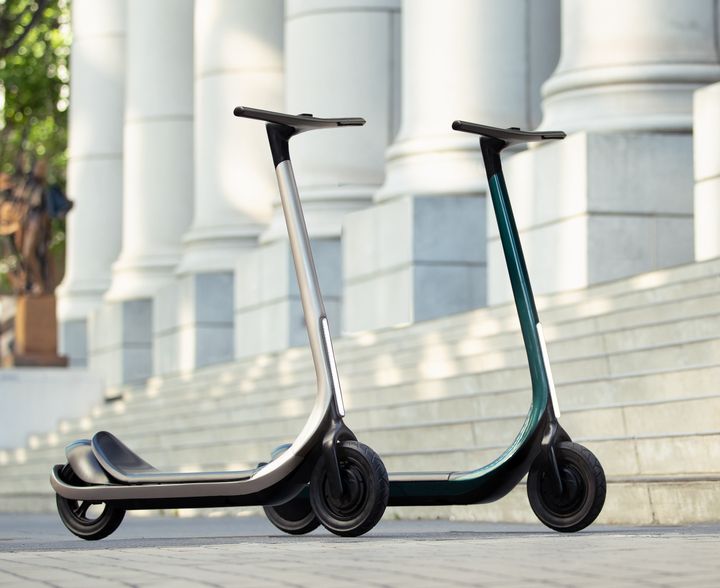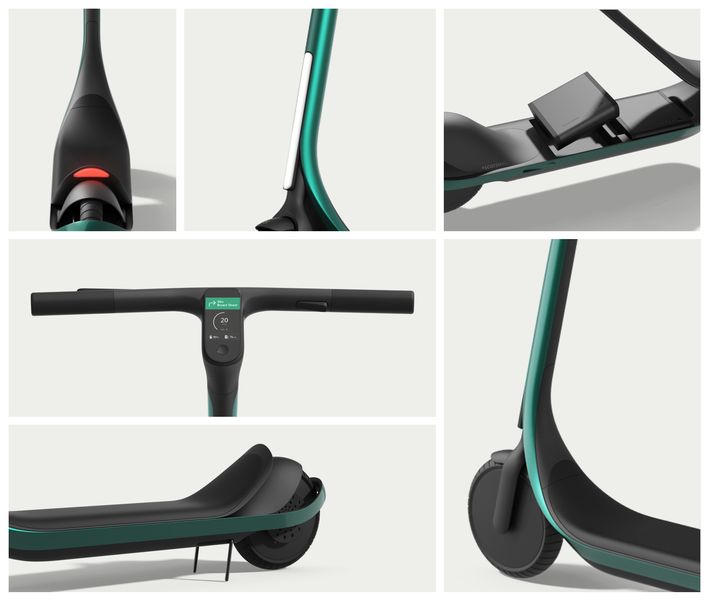
Following on from the Superstrata 3D printed carbon fiber bike, the Arevo team has launched an e-Scooter.
The scooter is named the “Scotsman” for reasons I don’t understand, but it is 3D printed using Arevo’s continuous carbon fiber process, the same approach used for the Superstrata custom bike.
The idea behind both the Superstrata and Scotsman is to leverage 3D printing’s ability to produce unique items in each production run, unlike traditional mass manufacturing where each item is identical. For the Superstrata bike, buyers measurements dictated the final specification for each purchased bike, and it looks like the same approach is being done for the Scotsman scooter.
Both of these products are 3D printed using continuous carbon fiber, which is far stronger than a simple polymer structure, and much stronger than polymers mixed with chopped carbon fiber. “Continuous” really means continuous: there are long unbroken strands of carbon fiber threaded through the vehicle structure.
Carbon fiber is one of the strongest materials known, and is increasingly becoming a go-to material for tough applications. The problem holding it back has been an inability to use it in applications with complex geometries. Typically continuous carbon fiber would be used in woven sheets or in a layup process, meaning it could not be effectively used in some applications.
However, Arevo put technology together to do so by combining continuous carbon fiber with robotic 3D printing to create a means to do so. The Superstrata and Scotsman are the two first major applications to use Arevo technology.
Both projects have been launched using crowdfunding approaches on the Indiegogo platform, which is similar to Kickstarter.
As of this writing, there seems to be many Superstrata bike backers anxious to receive their vehicles, but Sonny Vu, the fellow behind the launches, explains the delays are due to pandemic supply chain effects, which we have all seen in other areas.
Meanwhile, the Scotsman’s Indiegogo page has been launched and the scooter is offered in three configurations:
- Scotsman 500 (US$1,599 discounted, MSRP US$2,999)
- Scotsman 1000 (US$1,799 discounted, MSRP US$3,499)
- Scotsman 2000 (US$2,299 discounted, MSRP US$4,499)
The three models differ mainly in that their top speed increases as you go up in model level. The 500 can reach 30km/h, the 1000 can reach 50km/h and the highest speed of 72km/h is achieved on the 2000. Otherwise the features are similar, even the maximum range of 112km.

The Scotsman scooter sports a number of advanced features, such as an integrated 180 degree dash cam, leaf spring suspension, USB charger for other devices, foldable design for commuters, regenerative braking, onboard GPS, 4G connection and much more.
Due to the lightweight nature of carbon fiber, the Scotsman includes a rather wide deck where it’s said to be more comfortable to place your feet while riding. In other words, you there’s more wiggle room.

Each Scotsman scooter is uniquely produced for buyers based on specific measurements. Buyers are required to provide a number of measurements, including height, length of arms and legs, weight and others factors. These are used to reconfigure the base parametric design into a custom 3D model for printing.
Scotsman production takes place at the company’s Vietnams-based factory, where the 3D printers reside.
If you’re into scootering and 3D printing, this might be worth checking out.
